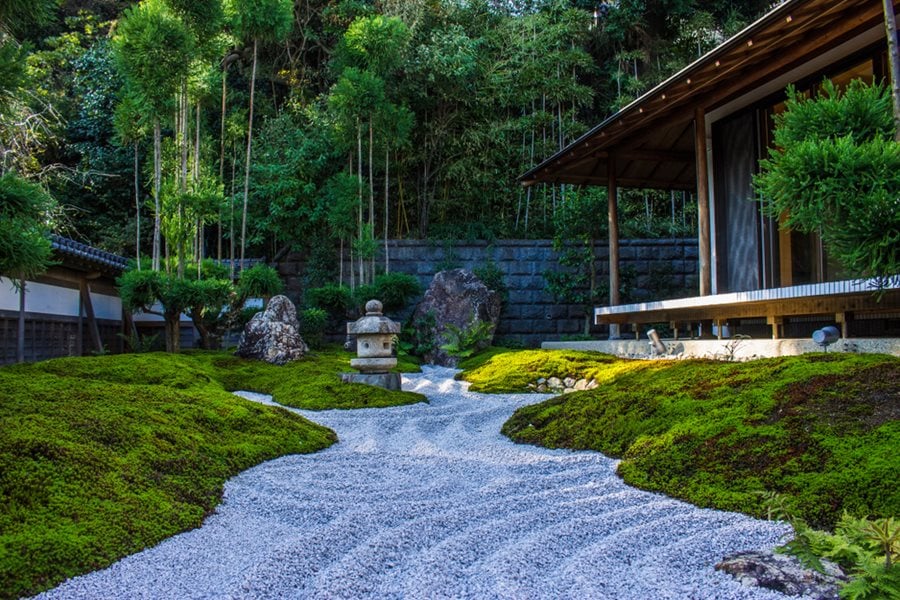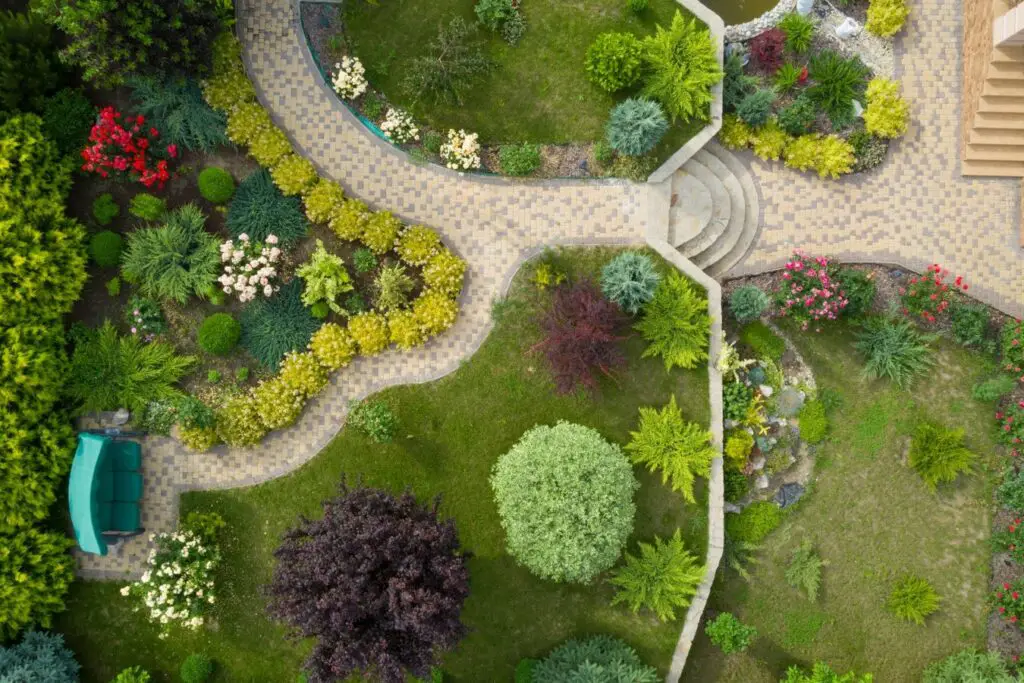A Zen garden is a type of Japanese garden that is designed to promote relaxation and reflection. The most important element of a Zen garden is the sand or gravel, which is meant to represent water. Other elements in a Zen garden may include rocks, plants, and lanterns.
- Choose a location for your garden
- It should be in a place where you will see it often, such as near your front door or in your backyard
- Decide on the size of your garden
- It can be as small as a few square feet or as large as an acre
- Choose the type of plants and rocks you want to use in your garden
- Consider using native plants that are known to do well in your area
- Design the layout of your garden using Rocks and Plants
- Place the larger rocks first and then fill in with smaller rocks and plants around them
- Use different textures, colors, and sizes of rocks and plants to create interest in your garden
- Once you have designed the layout of your garden, start planting! Be sure to water regularly and care for your plants so they continue to thrive

Credit: www.gardendesign.com
How Do You Layout a Zen Garden?
When you think of a Zen garden, you may imagine a tranquil oasis with beautiful rocks, gravel and sand. This type of garden can be created in any size space, from a small patio to a large backyard. The key to creating your own Zen garden is in the layout and design.
The first step is to choose the location for your garden. It’s important to find a spot that is quiet and secluded, away from any busy streets or noisy neighbors. Once you’ve found the perfect spot, it’s time to start planning your layout.
A typical Zen garden is rectangular in shape, with gravel or sand covering the entire surface. In the center of the garden there is usually a small hill or mound, which represents Mount Fuji in Japan. Around the mountaintop, you will often see rocks placed strategically throughout the gravel.
Rocks are an important element in a Zen garden, as they represent mountains and islands. The placement of rocks is very precise and symbolic, so it’s important to take your time when choosing where to put them. Gravel or sand can be used to fill in any gaps around the rocks.
Plants are another important element in a Zen garden. Bamboo, moss and other low-growing plants are often used because they don’t obstruct the view of the gravel or sand below them. Plants can also be used to add color and contrast to your garden design.
water features are also popular in Zen gardens. A small fountain or waterfall adds both beauty and relaxation to your space.
What are the Eight Elements of Zen Garden?
A zen garden is a type of Japanese garden that is designed to promote relaxation and meditation. The eight elements of a zen garden are:
1. Rocks: Rocks are often used in zen gardens as they represent mountains and can be used to symbolize strength and stability.
2. Sand or gravel: Sand or gravel is used to represent water and is often raked in patterns to create a calming effect.
3. Plants: Plants are used for their symbolism as well as their aesthetic value. Bamboo, for example, represents strength and resilience, while cherry blossoms represent the ephemeral nature of life.
4. Lanterns: Lanterns are sometimes placed in zen gardens as they represent the light of wisdom leading the way through the darkness of ignorance.
5. Bridges: Bridges are often included in zen gardens as they provide a connection between two points and can represent the journey from one state of being to another (e.g., from ignorance to enlightenment).
6. Stones: Stones can be used in various ways in zen gardens, but are typically placed on top of the sand or gravel to represent islands in a sea of calmness (i7n other words,they symbolize peace amidst chaos).
Additionally, stones may also be inscribed with wise sayings or poems to inspire reflection. 8 .
What are the Three Types of Zen Garden?
There are three main types of Zen gardens: dry landscape gardens, moss gardens, and gravel gardens. Each type has its own distinct look and feel, but all are meant to promote relaxation and contemplation.
Dry landscape gardens, also known as karesansui or “rock garden” gardens, are the most well-known type of Zen garden.
These gardens typically consist of a carefully arranged arrangement of rocks, sand, and gravel, with few or no plants. The goal of these gardens is to create a sense of calm and space, while also providing a place for contemplation and reflection.
Moss gardens are another type of Zen garden that often includes both plant life and rocks or gravel.
These gardens tend to be more lush than dry landscape gardens, with a variety of different mosses adding color and texture. Moss gardens can be either indoor or outdoor spaces, but they’re typically smaller in scale than other types of Zen garden.
Gravel Gardens round out the three main types of Zen garden.
These spaces typically feature a mix of gravel, rocks, and sand, with occasional plantings throughout. Gravel gardens can have either formal or informal designs, depending on your preferences. Like other types of Zen garden, they’re meant to promote relaxation and provide a space for contemplation.
What Should I Add to My Zen Garden?
A zen garden is a special type of garden that is designed to promote relaxation and peace. There are many different things that you can add to your zen garden in order to create the perfect environment for relaxation. Some of the most popular items that are added to zen gardens include:
-Rocks: Rocks are a very important element in zen gardens. They represent stability and grounding. Choose rocks that have smooth surfaces and pleasing shapes.
-Plants: Plants add beauty and life to your zen garden. Choose plants that are known for their calming properties, such as lavender or chamomile. Avoid plants with thorns or sharp edges.
-Water features: Water is incredibly soothing and calming. Add a small fountain or waterfall to your zen garden for the ultimate relaxing experience.
How To Make Your Own Japanese ZEN Garden | GARDEN | Great Home Ideas
How to Make a Zen Garden Mini
Making your own zen garden is a great way to relax and de-stress. Plus, it’s a lot of fun! Here’s how to make a mini zen garden of your own:
You will need:
-A small pot or tray
-Potting soil
-Rocks or pebbles
-A plant (optional)
-A rake or toothpick
Instructions:
1. Fill your pot or tray with potting soil. You don’t need much, just enough to cover the bottom.
2. Add in your rocks or pebbles. Again, there’s no need for too many – a few handfuls should be plenty.3. If you’re using a plant, now is the time to add it in.
Otherwise, skip this step.4. Use your rake or toothpick to create patterns in the sand/soil. Have fun with it!
5. Sit back and enjoy your handiwork!
Zen Garden Sand
A zen garden is a special type of garden that is designed to promote relaxation and meditation. Zen gardens typically feature simple, clean lines and natural materials such as gravel or sand.
One of the most important elements of a zen garden is the sand.
The sand represents the ocean, which is a symbol of change and impermanence. It also represents the passage of time, as it slowly shifts and moves in response to the wind or rain.
The color of the sand can also be significant.
White sand represents purity and peace, while black sand can represent wisdom or mystery. Ultimately, the color you choose for your zen garden should be based on your own personal preferences.
When it comes to maintenance, zen gardens are relatively low-maintenance.
However, they do require some attention in order to keep them looking their best. For example, you will need to rake the sand regularly to create patterns or designs. You may also want to add new stones or plants from time to time as well.
Zen Garden Kit
Welcome to our Zen Garden Kit blog post! This kit is perfect for those who want to create their own personal oasis of peace and relaxation. It includes all the essential elements needed to build a beautiful and serene space, including: river stones, sand, gravel, bamboo plants, and a miniature pagoda.
Everything you need is included – just add water!
The first step in creating your zen garden is to choose the perfect location. A spot that receives plenty of sunlight is ideal, as bamboo thrives in sunnier conditions.
Once you’ve found the perfect spot, it’s time to start assembling your garden!
Begin by placing the river stones around the perimeter of your chosen area. Then, fill in the center with sand or gravel.
Next, add some greenery by planting bamboo plants throughout the space. Finally, top it off with a miniature pagoda for an authentic touch.
Now that your garden is complete, it’s time to sit back and enjoy your peaceful oasis!
Conclusion
This blog post provides some great tips for designing a Zen garden. By following these tips, you can create a beautiful and tranquil space that is perfect for relaxing and meditation.




